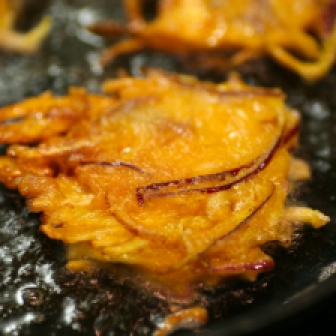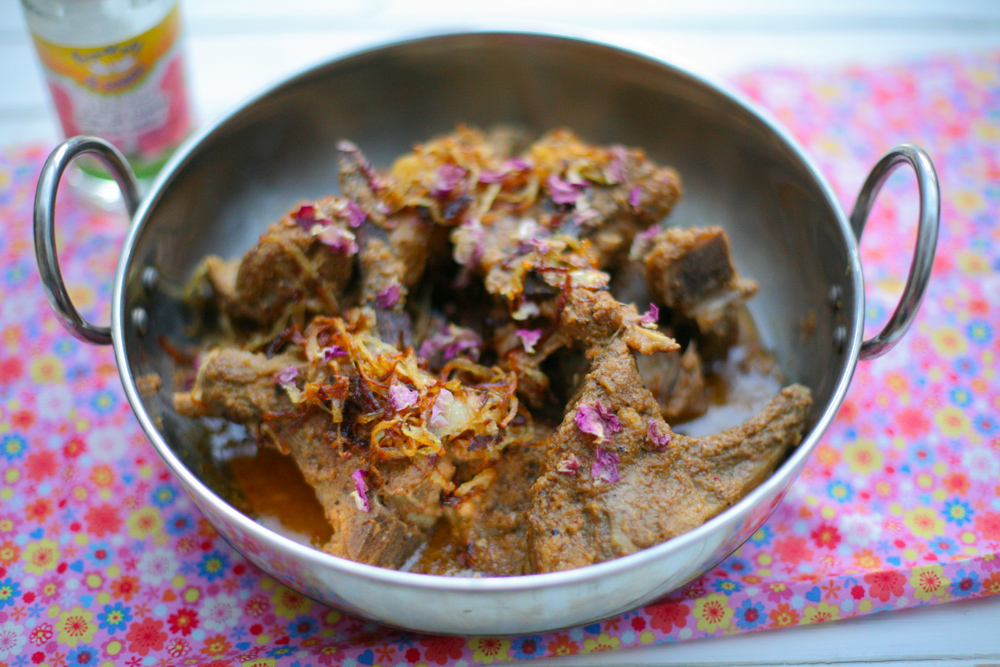I have been absent from my blog now for far too long. Marketing my book has been my priority, and whilst it is very time consuming, I have been enjoying the process immensely. For those who have been hibernating in a cave for the past year my book – ‘Chilli & Mint: Indian Home Cooking from a British Kitchen’ was published almost a year ago and has now been gracing the shelves of many a bookshop and online. I’ve just had a second print run released, which is great news (whoop for joy), so please do think about buying one if you haven’t already or to gift it to friends or family. It is available from all good bookshops here in the UK, and the usual places online. For those in Oz, the best place to purchase is from Book Topia here, worldwide more generally – then either Book Depositary here , or of course Amazon.
Alongside my bookshop events and marketing the book in general, I am continuing to run my ‘spice tour and Indian cooking class’. The other day, one client noticed some quince sitting in my fruit bowl and asked me what I planned to do with them. Interestingly it had been on my mind as I did not want to go down the quince jam/jelly route. My client – who is of Iranian decent – suggested ‘Quince Khoresh’, which is a meat and quince dish with sour, sweet and salty notes. Everything fell into place and she kindly sent me a recipe to follow.
In short, I adored the dish but the measurements of sugar, for me, were way too sweet, so I have adjusted here to what I think will be better. In the food notes of the actual recipe (whose recipe it does not say sadly) it talks about how quince was valued for its aphrodisiac powers and how it was customarily given to brides on their wedding nights. The seeds apparently are used in herbal teas to sooth coughs.
I’d love to hear how you get on with the dish and let me know what you think of the sugar balance. Do you need more than I suggest, which sugar do you use? Pop your thoughts and feedback in the comments below.
Quince Khoresh
Serves 6
3 onions, peeled and thinly sliced
1kg stewing lamb (you can also use chicken, beef or veal if you prefer)
6 tbsp rapeseed oil (or oil of your choice)
1 tsp salt
1 tsp freshly ground black pepper
1/4 tsp ground cinnamon
3 large quinces, peeled, core removed and quartered
50g sugar (I used caster but use what you have to hand – the original recipe asked for 150g of sugar but for me this was way too much – adjust according to your taste)
50ml balsamic vinegar
50ml fresh lime juice
1/4 tsp saffron dissolved in two tablespoons of hot water
100g yellow split peas (but you could also: toor or chana dal use jarred/tinned chickpeas)
1-2 potatoes, diced into bite sized (optional – I only added these as I had peeled ones which needed using up in the fridge. The original recipe does not mention potatoes
- Use a large deep caste iron pot, add 3 tbsp of the oil and then bronze the onions over the course of 8-10 minutes.
- Next add the lamb, salt, pepper and cinnamon and allow to brown on all sides. This will take around 10 minutes. Then add 800ml of water and simmer covered for an hour (30 mins if using chicken). IF you are using yellow split peas, toor or chana, soak first for a few hours- or overnight if you are that organised – then add them to the pan at this early stage. If using jarred or tinned then add them at stage 4.
- Meanwhile, core and peel the quince and then quarter then. Using a skillet, add a couple of tablespoons of oil and allow then to brown on both sides, which will take around 10 minutes. Place to one side.
- After the meat has been cooking for an hour (30 mins if using chicken), add the sugar, vinegar, lime juice, saffron water and tinned/jarred lentils and potatoes (if using – not a prerequisite for this recipe – see notes above). Allow to simmer for a further 45 minutes and add a little more water if required.
- Taste test and adjust the seasons as required.
- Serve alongside some steamed rice.
























































